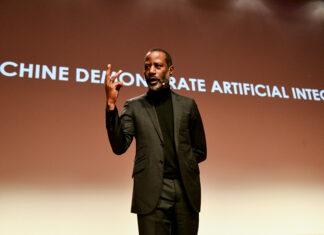Modern workers aren’t following traditional career paths – and recruitment teams must adjust their talent strategies in response. Candidates are increasingly entering the job market with a wide-ranging set of skills, not just through their experience, but through self-skilling outside of their jobs and education. Job titles alone are no longer an appropriate assessment method for role suitability. As a result, many organisations are beginning to adopt skills-based hiring methods, moving away from simply focusing on qualifications or experience, to fully understand a candidate’s potential.
However, this approach comes with a challenge. The traditional method of cataloguing an organisation’s skills inventory and matching candidate skills to job descriptions is a manual, time-consuming process. Additionally, a skills-based hiring strategy brings a wider talent pool, which means more applications, more interviews, and more work for recruiters. If organisations are to reap the benefits of a skills-based hiring system, then it’s vital recruiters are equipped with the right tools. In this regard, organisations should be looking at the immense impact AI can have on a skills-based hiring approach.
Diving headfirst into deep talent pools
The challenging state of the labour market has left many organisations struggling to fill job openings. The Bank of England even went as far as to state that the UK’s job market is “permanently smaller” as a result of the pandemic, and businesses are feeling the strain on their workforce. With a skill-based hiring approach, organisations are no longer restrained by archaic requirements such as specific degrees, and can instead gain access to fresh, varied, and affordable talent.
Narrowing down wide talent pools has always been a time-consuming process, with recruiters currently needing to sift through countless applications containing overwhelming amounts of information. This has led to the average recruiter spending just 7 seconds reviewing a CV, as they go through everything manually, likely leading to many suitable candidates falling through the cracks. AI can be brought in to expedite the process and help identify suitable candidates by processing large quantities of data almost instantaneously, and present this to the user in a digestible format. For example, if a recruiter is looking for a worker specialised in a particular field, or is an expert in a specific platform, AI can be used to filter candidates that have these mentioned in their applications.
Finally, AI can help organisations with their internal mobility. By using the data and insights gathered from performance reviews and tracking employee development, organisations have a deeper understanding of the current skillsets their team possesses. Not only does this make it easier to reposition an employee into a role more suited for them, but also reduces the reliance on costly external agencies.
Mitigating costly hiring mistakes
Implementing AI also proves helpful for organisations that often scale up or down their workforce according to project demands or business cycles with temporary or fixed-term employees. Organisations often look to temporary workers, such as contingent workers, with the expectation that they will bring a high level of expertise, and be productive from day one. This means any hiring missteps can prove extremely costly to an organisation, and have direct implications on success as a business.
A skill-based hiring strategy can reduce the chances of misclassification, but only if the AI has enough data to work with. With a small data set, an AI is prone to more mistakes as it has to reshape its limited knowledge to answer each request, rather than extract the relevant information from a large database. This issue extends to organisations who hire talent from international markets, who not only have the challenge of extracting the right talent from a wider talent pool but also must have an understanding of the cost-related complexities that often make recruiting talent from abroad difficult. By automating time-consuming tasks, these administrative hurdles are a lot easier to overcome, and ensure the recruiter can instead focus on identifying talent that is the best fit for the role – no matter where in the world they are based.
AI’s continuing development
Despite the rapid advancements we’ve seen from AI over the past few years, we’re still in the early stages technology’s development – and recruiters must remain aware of this. It’s critical recruiters and organisations are consistently monitoring and reviewing the data sets that are being fed into their AI systems. Not only does this ensure results are being delivered with the highest degree of relevancy, but also gives organisations the best chance of addressing biases. Whilst it remains unrealistic to review each candidate’s profile in depth, particularly if there are a lot of applicants, recruiters should continue to extensively review their chosen shortlist of candidates to ensure the AI is generating a correct representative of the applicant’s profile.
AI can be a tremendous tool for organisations adopting skills-based hiring practices, but the technology must be seen as a partner for recruiters, and not a replacement. Recruiters should be using AI as a way to increase efficiency when reviewing initial candidates, but ultimately any final hiring decisions must be made by a human. Identifying a candidate’s skill set is a vital part of the hiring process, but the emotional intelligence and interpersonal qualities that recruiters possess also remain critical for recruiting success.
About the Author
 Tracy Stanton has more than 20 years Executive Leadership in HCM and TTM space, working with customers to drive growth using data as key enabler. Skilled in change management and talent development, Tracy fosters collaboration and delivers impactful results in diverse environments.
Tracy Stanton has more than 20 years Executive Leadership in HCM and TTM space, working with customers to drive growth using data as key enabler. Skilled in change management and talent development, Tracy fosters collaboration and delivers impactful results in diverse environments.
In her current role, following a number of acquisitions, she’s been working on aligning the services organization with a heavy focus on operational excellence and delighting our customers.

































